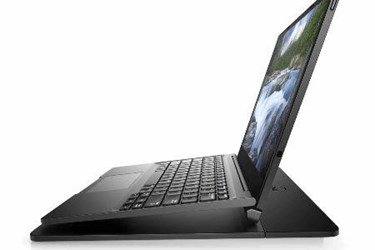World's First Wirelessly Charged Laptop Hits Shelves
By Jof Enriquez,
Follow me on Twitter @jofenriq

Dell's Latitude 7285, the world's first wireless charging 2-in-1 business laptop using WiTricity's magnetic resonance technology, is now available for purchase.
Unveiled at the 2017 CES Show back in January, the Latitude 7285 charges itself through a wireless charging mat (sold separately) and connects with a WiGig wireless dock.
“I think it’s just a significant proof point that large, global brands can integrate this technology into their products,” WiTricity CEO Alex Gruzen, who hinted at forthcoming partnerships with several companies, told Xconomy. “Wireless power is just going to be how you charge things in the next few years. It’s going to be the new normal. You’ve got to start somewhere.”
Researchers now are wirelessly charging vehicles and mobile devices in their labs and test tracks, but industry pundits say the technology will become mainstream in a few years. Juniper Research says nearly 40 percent of households in the United States and over 20 percent in Europe will use wireless charging by 2020.
Dell's laptop is the first consumer electronic device with a type of wireless charging technology called magnetic resonance, which relies on magnetic resonators developed by Watertown, MA-based wireless power tech company WiTricity that efficiently transfer power over distances via the magnetic near-field.
"WiTricity's magnetic resonance technology was seamlessly integrated to enable the Latitude 7000 Series Detachable to be charged wirelessly over distance and with positional flexibility while keeping the 2-in-1 notebook's sleek design," said Kirk Schell, Senior VP, Commercial Client Solutions, Dell, reported ZDNet.
Unlike inductive charging, which requires the transmitter and receiver to be in close contact and with perfect alignment, WiTricity says magnetic resonant charging allows power transfer over distance with greater spatial freedom, allowing multiple devices to be charged at once – through surfaces like wood, gypsum board, plastic, and concrete – at different power levels.
Also, devices that are magnetic resonant compatible don't have to be placed directly atop charging mats. The Latitude 7285 does require an AirFuel compatible charging surface to draw power, but Gruzen told Xconomy that "future versions could be configured to draw power from a charging station mounted under a desk, for example."
The AirFuel Alliance is a group of tech companies pushing for new wireless charging standards for both inductive and resonant charging technologies. Besides charging consumer electronics, the consortium says resonant wireless charging can support value-added services such as mobile payments, gaming, advertising, peer-to-peer data sharing and location based services.
